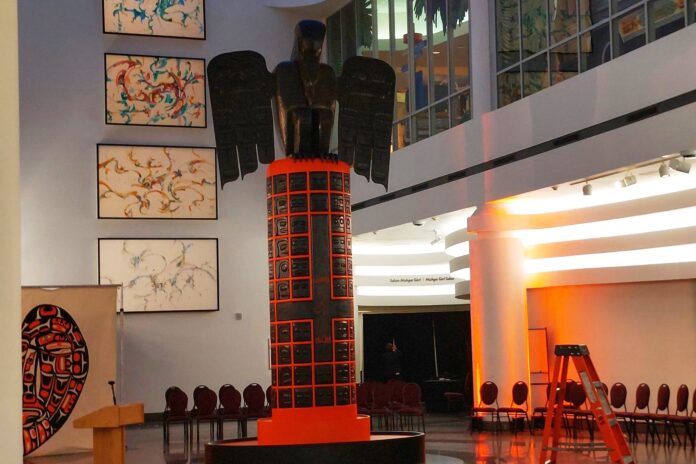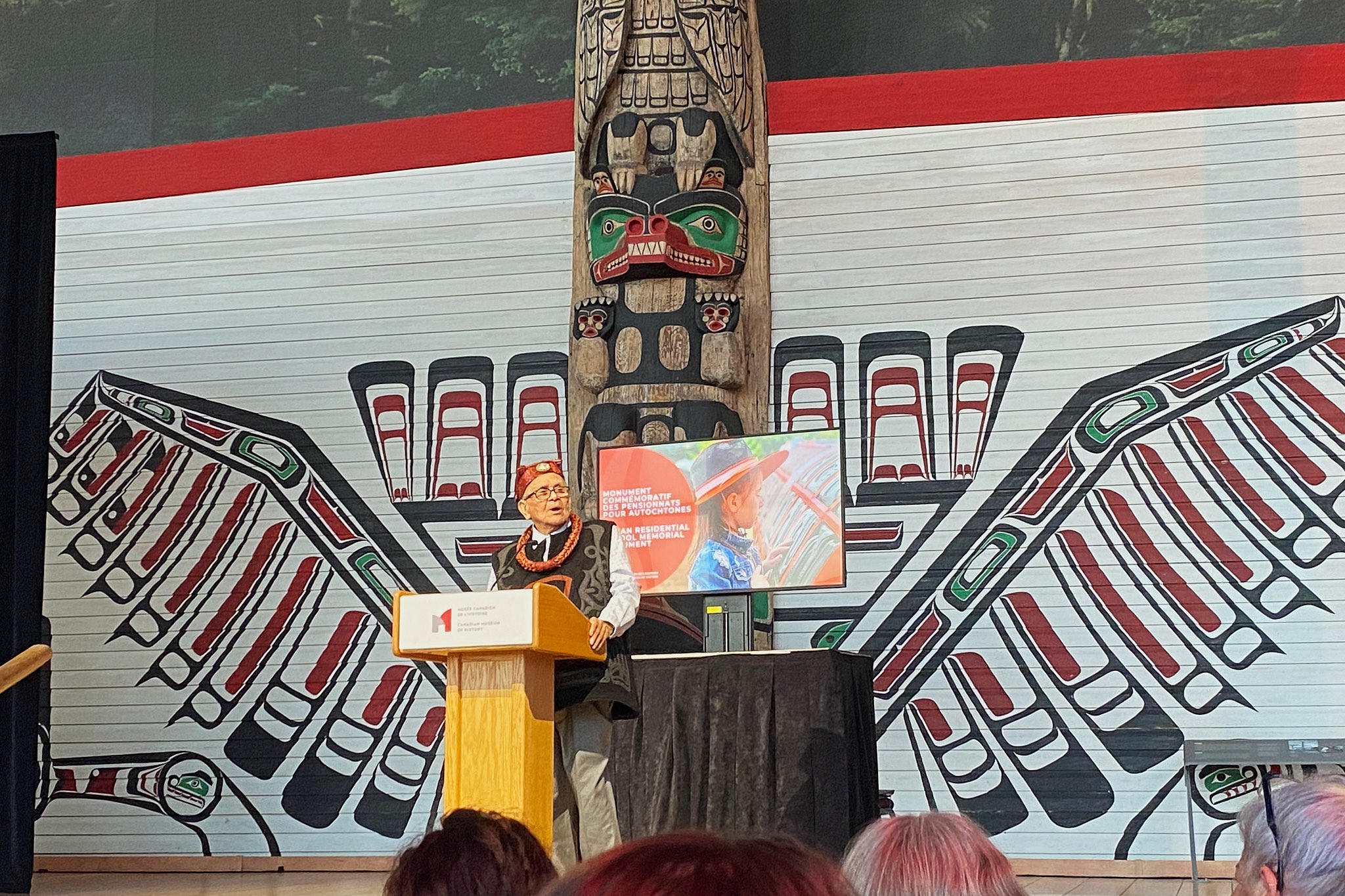
Canadian Museum of History welcomed an 18-foot sculpture commemorating residential school history to honour National Day for Truth and Reconciliation on Sept. 30.
Attended by around 1,000 people, the event showcased a towering red cedar tree sculpture with hand-carved features displaying the ongoing pain perpetuated by the residential school system.
The monument features upside-down symbols representing groups that caused harm through the residential school system. Symbols include an upside-down cross representing the Catholic Church, an upside-down Maple Leaf representing the Canadian government and upside-down acronyms representing the Royal Canadian Mounted Police and the North-West Mounted Police.
Kwaguʼł master carver Stanley Hunt, the creator of the monument, brought 47 family members and close friends with him to the museum from British Columbia.
Hunt said he was inspired to create the monument after seeing the “horrible” and “devastating” evidence found in 2021 that at least 215 children were buried in unmarked graves around Kamloops Indian Residential School.
He said the sculpture’s creative process was “angry.”
“I love Canada,” he said. “I used to celebrate Canada Day with all of our family every year. I’m proud of Canada — until this happened and I never did that again.”
Faces of 130 unsmiling children surround the symbols, representing thousands more who never returned home from residential schools. The monument is topped by a raven protectively watching over them.
“Each one of those faces that you see on there represents a child in different degrees of grief and, in fact, some of them are skeletons, and that’s because it’s true,” Hunt said.

“Reconciliation is so fundamental and we need it for the future,” Joseph said “It’s a cornerstone for equality, justice, love and caring for each other.”
Joseph said he was “in awe” when he first saw the sculpture.
“I knew it must have been divine intervention for the artist to be inspired to do that. He followed his inclination and was guided by his spirit,” Joseph said.
He said the contrast between the sculpture’s orange and black colours stood out to him.
“That was the contrast of reality for little Indigenous kids who went to those schools,” he said. “They came from families and communities that were so loving and suddenly they were in the most dark places.”
As part of the ceremony, Hunt’s family and community members, including many youth, welcomed the sculpture by circling around it in various Kwaguʼł and Tlingit dances.
“They’re going to be looking back at this when they’re my age and they can say, ‘I was there and I danced for these kids,’” Hunt said.
Caroline Dromaguet, president and CEO of the Canadian Museum of History, said the museum were “honoured” when Hunt shared his vision for the monument.
“He wanted to know that in 100 to 500 years from now, it will still be here to remind people of the history and the stories that it tells,” Dromaguet said.
After about a year of carving, the monument travelled from Vancouver to Ottawa by boat and then by flatbed truck.
Dromaguet said the monument was first raised in the museum on Sept. 26 with “the careful work” and help from engineers.
“It was just a moment I wouldn’t forget,” she said.

“This pole will always remind, not only us, but remind the newcomers, that we have work to do,” Joseph said. “And it’s never going to end, it’s always going to be about creating even better, higher relationships and developing a love for each other. And that’s possible in this thing called reconciliation.”
The monument will be an important conversation starter for generations to come, Joseph said.
“Someday, you’ll have grandchildren, they’re gonna see it, they’re gonna say, ‘Did your grandma go up to that school? What does that mean?’ So it will always be that beacon of hope, of inspiration.”
Reflecting on the monument, Hunt said his role is simply to convey a message.
“I didn’t write the history of Canada, I’m just telling the truth about it,” Hunt said.
With files from Abyssinia Abebe.
Featured Image by Marissa Meilleur/The Charlatan.





